Features
The state of the art: Our cinema
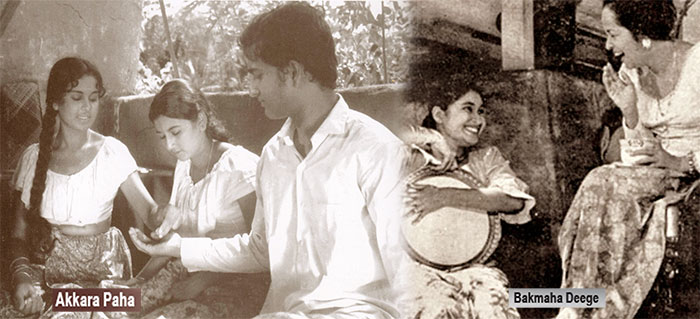
By Uditha Devapriya
(With input from Dhananjaya Samarakoon)
In 1965 the Sri Lankan government published the findings of a Commission of Inquiry into the Film Industry. Filled with proposals and representations from prominent players in the Ceylonese cinema, the Commission made several recommendations. The most important of these was the establishment of a National Film Corporation. Though this would not come to pass until six years later, with the election of a socialist regime committed to a level playing field in the industry, the need for such an institution was frequently underscored.
Among those who made representations to the Commission was Ceylon Theatres. Admitting to the problems of the local cinema, the organisation contended that whether financed by the State or by private players, the film producer “cannot escape the limitations imposed by his audience.” Distinguishing between the cinema and the other arts, it added that while painters, playwrights, novelists, and sculptors could create without paying much regard for the reactions of the masses, the producer remained “the slave of his audience.”
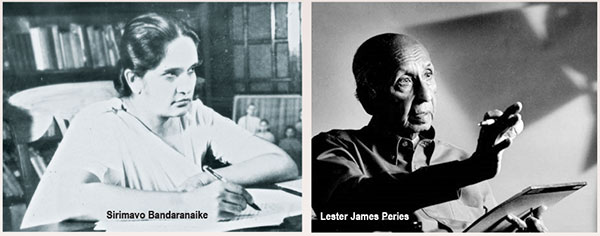
Perhaps the most important point the Commission made was the link between the fortunes of the cinema and the country’s economic problems. Advocating greater intervention in the sector, the centre-left administration which took office in 1970 recognised the problems of allowing a few private players “to virtually control the local film industry.” To that end the new government sought to reduce the influence of monopolistic elements in the market, by regulating the production, distribution, and exhibition of films. Seeking superior production values and greater local output, it tried to give the cinema a new lease of life.
In 1977 the controls enforced by the Sirimavo Bandaranaike administration were loosened. The most immediate result of the new policy was, on the one hand, “ever increasing access to American and Hong Kong productions” and, on the other, the removal of “impediments for newcomers to enter the field.” In other words, from a level playing field, the industry transformed into a business venture. The introduction of television had a considerable say in the reduction of audience numbers that followed, though commentators are divided on the extent to which it led to a fall in cinema hall attendance.
Any examination of the problems and dilemmas of the Sri Lankan cinema must consider these historical developments and shifts. Rather belatedly recognising what should have been acknowledged a long time ago, the Sri Lankan State officially categorised the cinema as an industry late last year. Though this comes too little, too late, it nevertheless behoves us to consider and reflect upon the issues facing the field now, from both administrative and creative standpoints. As always, of course, the link between these issues and the country’s economic problems remains relevant, as much as it did in 1965.
Glancing through the history of the Sri Lankan cinema, from its inception in 1947, we note that the deterioration of creative standards has been rather sharp and dismal. What’s ironic is that despite such a descent, there’s no end to the courses being offered on filmmaking, acting, scriptwriting, and cinematography in the country today. We can conclude that the main contradiction here lies between an ever-fertile reserve of talent and a woeful lack of opportunity for such talent. In other words, we have enough and more talented people. But they lack the money, agency, and access to make full use of their talent.
Part of the reason, which hardly, if at all, gets mentioned by the local commentariat on the cinema, is the absence of an industrial base in the sector. It comes to no surprise that the peak of the Sri Lankan cinema should have been the 1960s and 1970s: these were years in which a flourishing artistic renaissance coincided a not insignificant industrial presence in the film sector. While State intervention became more pronounced under the United Front administration, the existence of a thriving commercial base in the industry ensured a steady stream of not just mainstream, but also artistic productions.
It’s entirely fitting, then, that the cultural revolution heralded by the general election of 1956, which saw a centre-left alliance touting the values of local art forms come to power, should face its peak in these two decades. It’s also fitting that the undisputed doyen of the Sri Lankan cinema, Lester James Peries, should not just make two masterpieces in a row – the highly literate Gamperaliya (1964) and the highly experimental Delovak Athara (1966) – but then follow them up with three further masterpieces, all done for a commercial player, Ceylon Theatres – Golu Hadawatha (1968), Akkara Paha (1969), and Nidhanaya (1970) – in this period. These were years of cultural experimentation, experimentation that benefitted from cultural sectors, especially film, being linked to an industrial framework.

Conversely, the deterioration of the cinema can be traceable to the deterioration of that industrial framework in the country. On the advice of the World Bank, Shiran Ilanperuma writes, the country’s first government “recklessly squandered foreign-currency reserves while avoiding major industrial investment.” Ilanperuma writes that by the 1960s, terms of trade had begun to shift irrevocably, “as the export of primary products and raw materials could not sustain the country’s consumption of imported manufactures.” This had a not insignificant impact on the cinema: by the late 1960s, it was becoming clear that unless the State stepped in, the Ceylonese cinema, for long dependent on an oligopoly of production companies, would collapse. This issue was what the National Film Corporation attempted to address upon its establishment in 1971, as it did over the next few years.
The implementation of swabasha, despite its obvious limitations, also had an impact on the trajectory of the cinema after the 1950s. Though reviled by the English-speaking elite, the empowerment of a Sinhalese-speaking middle-class gave rise to a bilingual intelligentsia, in turn paving the way for a bilingual cultural community. It was from this community that the likes of Dayananda Gunawardena, who gave us the finest adaptation of a French play ever turned into a Sinhalese film, Bakmaha Deege, hailed. While the deterioration of creative and intellectual standards within the population should be admitted, there is no doubt that at its heyday, the Sri Lankan cinema benefitted from a flourishing middle-class.
Today, unfortunately, despite the existence of an upward aspiring and largely Sinhalese middle bourgeoisie, prospects no longer seem good for the local cinema. In any country it is the middle-classes that produce, and reproduce, its cultural elites. In Sri Lanka, though, this community has, however one looks at it, regressed on so many levels, owing mainly to a declining economic situation. We can note the decline of standards in film and television production today, not so much in acting as in scriptwriting and camerawork. We can also note a despairing lack of imagination in films and TV serials: from predictable storylines to endless dialogues, we have come down dismally on so many fronts.
I think the problem has to do with the fact that we no longer explore new themes and issues through the cinema. If we do, we invariably create trends that are imitated and reproduced by a hundred or so other filmmakers and scriptwriters. Ho Gana Pokuna was a brilliant and a highly exceptional film, but it set a precedent for stories about impoverished village schools and idealistic teachers that continue to be filmed, even now. Aloko Udapadi sensationalised audiences and critics, but since its release five years ago we have been making million-rupee budget historical epics which look and feel despairingly predictable.
To be sure, these are hardly any problems specific to only the cinema. When was the last time a cover song didn’t make the rounds online, giving a temporary spotlight to the cover artist while popularising the original tune? When did a mainstream TV series, of which seem to be inundated with these days, not try to cut costs by way of static camera frames and endless expository dialogues? Art exhibitions, especially in Colombo, seem limited to an intellectual upper crust who can afford rental costs in the city and whose work seems not merely cut off from the world around them, but also downright indifferent to it.
We need to acknowledge that there can be no way out for the cinema here unless our cultural industries are linked to a proper industrial framework. In the 1960s, the last peak decade of the three big production companies, Sri Lanka faced an acute terms of trade and structural crisis that the State shielded the cinema from by establishing a Film Corporation and setting high artistic and administrative standards. This did not, to be sure, always work out well, but it did keep the cinema at bay during those difficult days of the 1970s. One can hardly be prudish about the liberalisation of the industry after 1977, but the fact is that the sluggish growth, and then decline, of the cinema remains very much linked to the economic and structural impasses we have been stumbling into since then.
The truth of the matter is that without a proper industrial policy and industrial base, no country’s cinema can be sustained for long. Whether from a creative or an administrative standpoint, the Sri Lankan cinema deserves much more than what it has been subjected to. But where are the policymakers and experts who can prescribe radical solutions, who can recommend an industrialisation plan that can help our cinema take off? In the US, in China, and in India, these problems have been, and are being, combated. In Sri Lanka this does not appear to be the case. That is to be regretted, deeply and sincerely.
(Uditha Devapriya can be reached at udakdev1@gmail.com, while Dhananjaya Samarakoon can be reached at dhananjayasmrk@gmail.com)
Features
Africa gaining ground in intra-regional cooperation
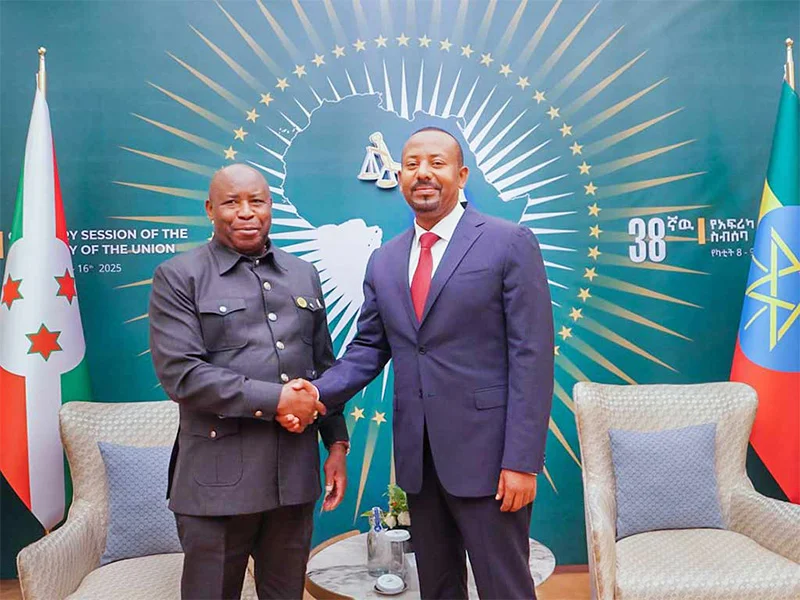
 At a time when the US is veering towards a policy of international isolation, it augurs well for international growth that Africa is emanating signs of stepping up intra-continental cooperation. Above all, Africa is in the process of proving that she could ‘stand-alone’ and be relatively autonomous in her ground-breaking growth drive.
At a time when the US is veering towards a policy of international isolation, it augurs well for international growth that Africa is emanating signs of stepping up intra-continental cooperation. Above all, Africa is in the process of proving that she could ‘stand-alone’ and be relatively autonomous in her ground-breaking growth drive.
Of course such epochal developments should not be construed as meaning that Africa would sooner rather than later be rid of the socio-political and economic bottlenecks that have been dogging her at heel for decades. What they mean is that she is managing these problems in a consistently constructive fashion currently.
We in South Asia in particular need to take note of these developments. This is mainly in view of the fact that SAARC is non-functional. It is not ‘dead’, as a former President of Sri Lanka tried to have us believe, but its virtual paralytic state at present should have discerning sections in the region concerned. It is robust regional cooperation in the fields that matter that helps a country in its growth and development and if SAARC is dysfunctional this is a serious setback for Sri Lanka and the region.
Closer integration into BIMSTEC and ASEAN is certainly desirable but if governments are having Sri Lanka’s best interests at heart it is primarily to the SAARC region that they need to look. For instance, how Sri Lanka is hoping to further its growth prospects by not factoring in stepped-up and positive economic interaction with India and Pakistan, for example, is incomprehensible.
There is a strong regional dimension to any country’s economic growth and unless the relevant regional cooperative mechanisms are rendered operational, the desired level of national development could not be achieved in full. Hence the need to render SAARC fully operational once again.
However, unless and until governments of the region realize the urgency of meeting the above challenge, SAARC would remain in a state inertia. The pressing need is visionary political leadership at the regional level. Right now this is seriously lacking.
It would seem inappropriate and misleading at first blush to attempt to draw comparisons between the vast continent of Africa and the South Asian region in view of the latter’s comparative geographical smallness, but this is more so why Africa’s present exercises in intra-continental cooperation need to be positivey assessed. If Africa could be making some headway in intra-regional cooperation, given her ‘Giant’ status and her seeming unmanageability as a collectivity, why can’t South Asia, a comparatively physically small region? ‘This is the Question’.
While the above and connected matters of importance for regional growth need to be seriously studied by political leaders and policymakers of South Asia, they would be acting in the regional interest by taking a leaf or two out of Africa’s book of cooperative growth and development.
All watchers of international development should feel compelled to take a hard, discerning look at the 38th African Union (AU) Summit held in Addis Ababa, beginning February 15th this year. Interestingly, the Summit theme was, ‘Justice for Africans and People of African Descent through Reparations.’
Coincidentally, erstwhile Namibian leader Dr. Sam Nujoma passed away on the eve of the Summit. Nujoma was perhaps the last of those prominent leaders from Africa who doggedly championed the cause of the libration of his country and of the continent from the shackles of colonialism. More leaders of his ilk are required by the South in general and Africa in particular.
While the acquiring of ‘reparations’ for colonialism’s ravages could prove a very long-gestation project, it is vitally important for Africa and other regions that came under colonial control to keep the issue constantly in focus.
Meanwhile, Africa’s gains in economic cooperation under the AU need to be studied appreciatively by the South and other regions in their interests. Some of the achievements of the AU under the aegis of the African Development Bank (ADB), as outlined by outgoing president of the Bank, Dr. Akinwumi A. Adesina at the Summit were: ‘515 million African lives were transformed over the past decade, including 231 million women, 127 million people gained access to better services in terms of health, 61 million people gained access to clean water, 33 million people benefited from improved sanitation, 46 million people gained access to ICT services, 25 million people gained access to electricity.’
Reports said that the Summit also, among other things, adopted the ‘African Financing Stability Mechanism’. Under this arrangement, $20 billion in debt refinancing will be provided for African nations. This will happen alongside the adoption of the ‘Strategic Framework on Key Actions to Achieve Inclusive Growth and Sustainable Development in Africa Report’.
The Report outlines key actions for Africa to ‘Achieve and sustain an annual growth rate of at least 7% of GDP over the next 5 decades.’
The above are a few aims that the AU intends to achieve going forward for the whole of Africa. But they are sufficient evidence of the current effectiveness of the collective organization. We see here a notable example in South-South cooperation which is a dire need today in the developing world.
South-South cooperation is the way to go particularly in consideration of the US’ current policy of virtually ridding itself of the past policy of helping the South by way of development assistance. Instead of bemoaning the fact that institutions, such as USAID, will be almost no more, the South would do well to take a hard look at Africa’s success stories in helping itself with little or no external assistance.
The discontinuation of US assistance needs to be seen as the proverbial ‘blessing in disguise’ by the South. Here is an opportunity for the Southern hemisphere to finally rid itself of those neo-colonial umbilical binds that have been preventing it from achieving genuine national liberation.
To be sure, the South is not going to meet with spectacular success by adopting the African model in the near term. But if the model is doggedly persisted with by enlightened governments of the South some success is certain to accure to the hitherto ‘Wretched of the Earth’, going forward.
Features
Mrs. World Tshego Gaelae …doing it differently

While most of our pageant winners get involved in frivolous activities, during their reign, the 40th Mrs. World pageant winner, Tshego Gaelae, from South Africa, is keen to bring into the spotlight her country’s potential.
Before her departure for the Mrs. World pageant, held in Las Vegas, in the USA, in January, the Lawyer, Entrepreneur, Model and Digital Creator, said:
“I’m so excited to be sent not only as a delegate but a representative of those hopeful hearts that always want to see South Africa’s potential shine and win. I stand on the shoulders of icons, world champions, the Queens that have gone ahead of me, and of the world leaders that continue to ensure our global participation and impact.
“Thank you everyone for the support so far!”

A coke and a smile…with Sprite Cucumber her pick
Referring to the interview for the position of Mrs. World, Gaelae said: “We get to bring our most authentic self to advocate for the causes we want to advance through the most prestigious platform that is the Mrs World Pageant. What an honour to have such experienced judges who care to hear about what I want to achieve.”
The lead up to the prestigious Mrs. World event was doubly exciting for Gaelae as she got the opportunity to display not only her country’s creations but also check out certain nostalgic venues.
“We received the honour of being at the Elvis penthouse suite, at the Westgate Vegas! The space is spectacularly filled with iconic and historic presence, fit for the king that was Elvis Presley.”
The Mrs World participants spent an evening honouring Victoria’s Voice Foundation and Gaelae’s gift to the Foundation was a canvas shirt with President Nelson Mandela’s face printed on it. The shirt can either be worn or displayed in a frame, and Gaelae says she is so glad to have had the opportunity to present a piece of her beloved South Africa.”

The bangles she gifted to all the participants at the Mrs. World pageant
Gaelae went on to say: “I always joke about being Zulu in my past life, but on a serious note, I love the Zulu Culture so much, that I gifted my Mrs. World Pageant Sisters some beautiful bangles.”
They also visited the special Coca-Cola Store in Vegas, and got to taste some interesting flavours. And Gaelae’s pick … “Sprite Cucumber definitely wins for me.”
Mrs. World enthusiastically said that one of the biggest gifts she received out of her Mrs South Africa journey was that of sisterhood, “and it’s so amazing to come to the Mrs. World pageant and find it once again,” she went on to say.
“My roommate was the gorgeous Ishadi Amanda from Sri Lanka! We bonded with no delay, and laughed till we cried! I was literally paired with a sister from another mother.”
Tshego Gaelae also had a special comment to make regarding the article we published about her in The Island of 6th February, 2025.
“Thank you so much for the beautiful article and coverage.”
Features
Activate all that is good for your skin

 Hi! This week, too, I’m giving you some easy to prepare tips to help you achieve all that is good for your skin.
Hi! This week, too, I’m giving you some easy to prepare tips to help you achieve all that is good for your skin.
* Cucumber and Lemon:
Mix equal parts cucumber and lemon juice and apply the mixture on your face (avoiding eyes). Allow it to sit for 10 minutes and then rinse it off. This natural face beauty tip will brighten your skin tone and lighten blemishes, if used on a regular basis. The best aspect is that it is appropriate for all skin types!
* Tomatoes:
Scoop up the pulp of one tomato and apply it evenly on your face. Allow it to dry for 15 minutes before washing it off with warm water … to reveal a naturally radiant skin.
* Green Tea:
After steeping green tea in hot water for about 05 minutes, allow the tea to cool. Transfer the tea to a spray bottle and spray, in short bursts, or place a little amount onto a cotton pad and pat on your face after thoroughly cleaning it.
* Chilled Tea Bags:
A chilled black or green tea bag does wonders for your skin. This natural face beauty technique may rapidly reduce puffiness around the eyes, making them appear brighter and more alert. Place the tea bags on your eyelids and relax for 05 to 15 minutes while they perform their magic.
* Honey:
Applying a small amount of honey to your face every day is an excellent approach to getting healthy, bright skin. Honey’s absorbing properties draw out pollutants from skin pores and help completely cleanse your skin. Honey’s antibacterial effects heal and prevent acne. Honey’s antimicrobial qualities soothe skin irritation and protect skin from bacterial infections. Honey, has remarkable moisturising effects and is also a terrific relief for dry skin.
* Coffee:
Exfoliating on a regular basis improves the appearance of your skin, making it look younger and healthier. For those who enjoy coffee, a homemade coffee scrub is all the weekly nourishment your skin requires. Coffee’s anti-inflammatory qualities minimize redness, irritation, and acne. All you need to do is mix freshly ground coffee beans, coconut oil, and brown sugar to your desired consistency in a bowl. Massage gently in circular strokes over your face, then rinse with warm water. After using an exfoliant, always moisturise.
-

 Sports5 days ago
Sports5 days agoRemarkable turnaround for Sri Lanka’s ODI team
-

 Business5 days ago
Business5 days agoUN Global Compact Network Sri Lanka: Empowering Businesses to Lead Sustainability in 2025 & Beyond
-

 Features5 days ago
Features5 days agoScammed and Stranded: The Dark Side of Sri Lanka’s Migration Industry
-

 News6 days ago
News6 days agoSpeaker agrees to probe allegations of ‘unethical funding’ by USAID
-
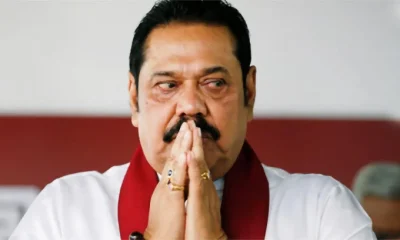
 Features4 days ago
Features4 days agoDon’t betray baiyas who voted you into power for lack of better alternative: a helpful warning to NPP – II
-
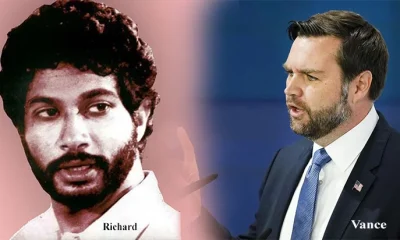
 Features4 days ago
Features4 days agoTwo films and comments
-

 Features7 days ago
Features7 days agoClean Sri Lanka and Noise Pollution (Part II)
-

 Editorial6 days ago
Editorial6 days agoCoal giant awakes, but uncertainty prevails











